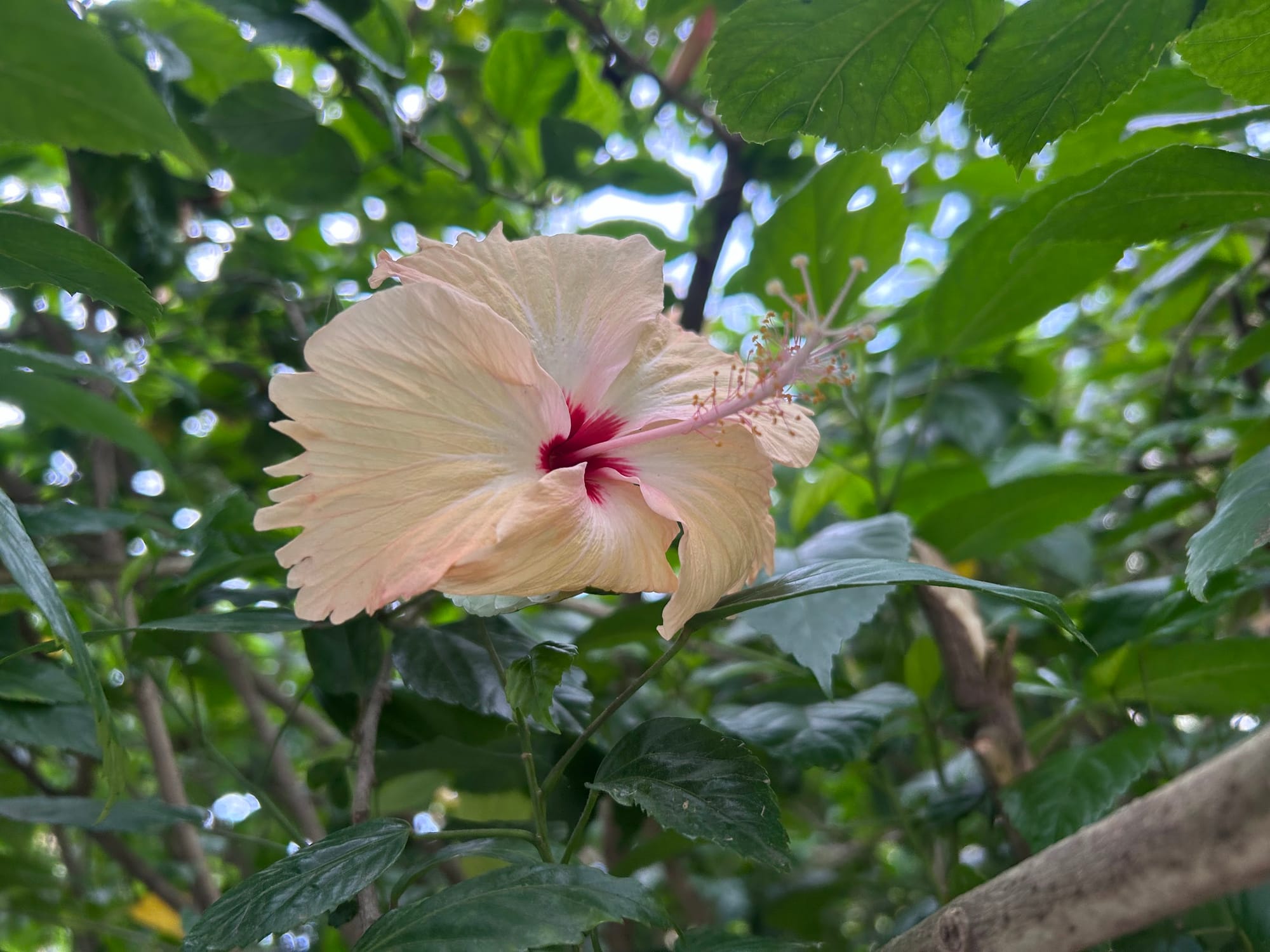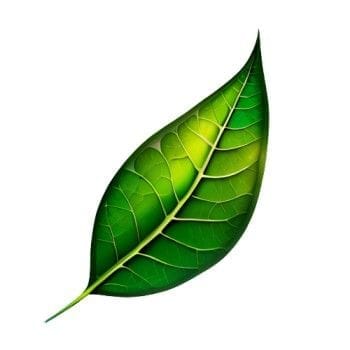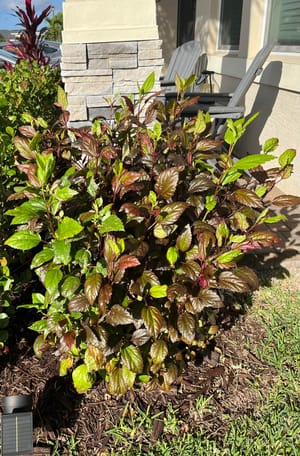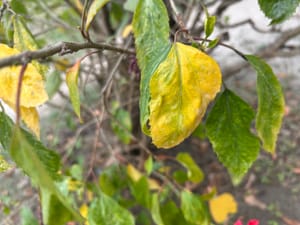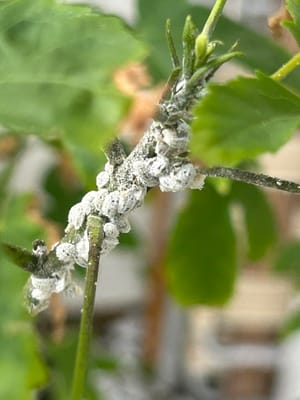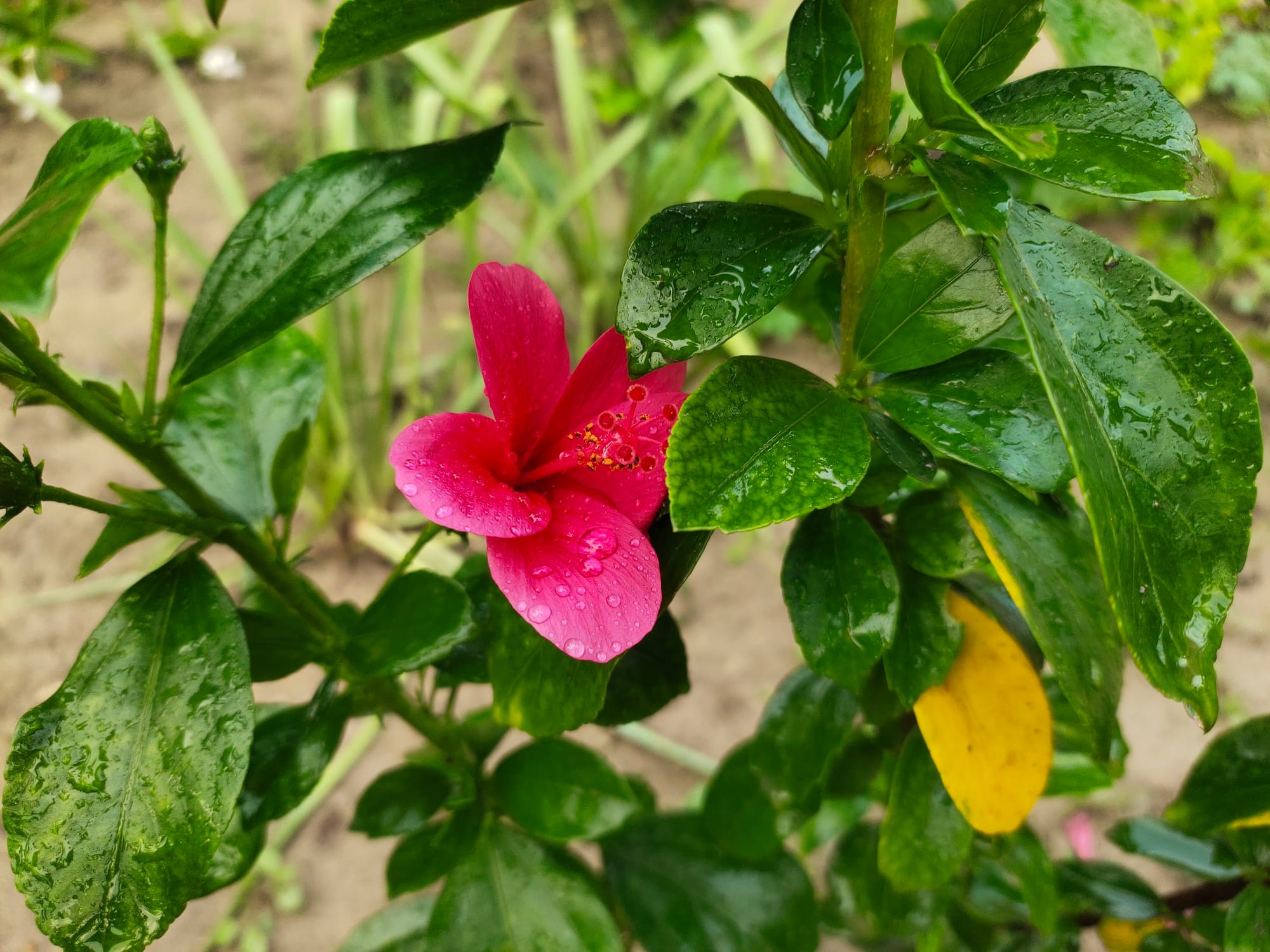
We don’t have to worry much about hibiscus during winter in USDA Zones 9–12, but its beauty tempts us to grow it in colder regions as well. In this article, I will guide you on how to care for hibiscus in winter.
There are two major types of hibiscus.
- Tropical Hibiscus
- Hardy Hibiscus
Hardy hibiscus can tolerate cold winters (even in Zone 6). If you are from a cold region (below Zone 7), make sure you go for a hardy type of hibiscus.
Note: This is an article that will focus only on winter care for Hibiscus. The regular caring guide is different from winter caring. When the temperature starts to fall, you may follow this care guide. (This will include watering schedule, fertilization guide, pruning guide, when to bring this plant inside, or when to cover the hibiscus, and a few more winter care tips)
Cold tolerance of Hibiscus based on types
Have a look at this chart.
| Type | USDA Zones | Cold Tolerance | Winter Care |
|---|---|---|---|
| Tropical Hibiscus (Hibiscus rosa-sinensis) |
9–12 | Not frost tolerant (below 50°F / 10°C = damage) |
Leep above 50–60°F, give it bright light |
| Hardy Hibiscus (H. moscheutos, H. syriacus) |
4–9 | Can survive -20°F / -29°C with protection | Can stay outdoors (I will not recommend keeping it outdoors in Below Zone 7), mulch heavily, cut back stems after frost |
| Perennial Hibiscus (Hardy Mallow) |
4–9 | Cold hardy, roots survive freezing | Leave stems until spring, mulch to save the roots |
This chart is designed for those who don't have time to read the entire article.
Note: If you are not sure what type of hibiscus you are growing, don't worry. I have created a Facebook community group where gardeners can upload pictures and ask any questions. Join this community from here: Join my Facebook group
Hardy hibiscus may have dormancy in winter. All the leaves will drop ( it can also look like a dead plant), but it will regrow from the roots in the next growing season after the fall.
For tropical hibiscus, it will have semi-dormancy. It means most of the leaves might turn yellow and drop in winter.
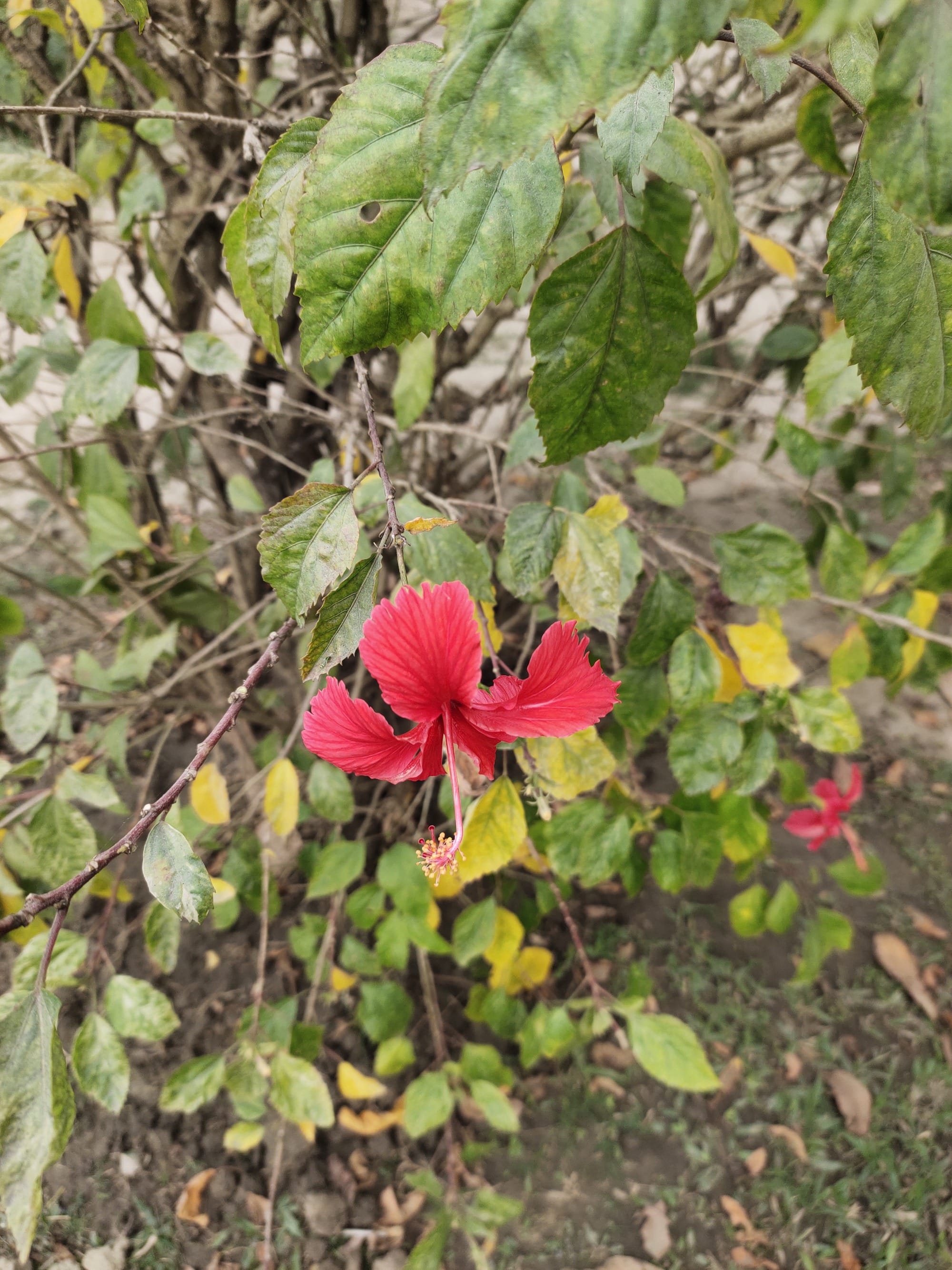
This picture was taken just before the fall, and you can see the plant is entering its semi-dormancy phase. The leaves will drop faster than ever. It's a tropical hibiscus.
If you notice yellow leaves outside of winter, check this guide: Yellow leaves on hibiscus - what to do
Quick Comparison of Winter Care - Tropical vs Hardy Hibiscus
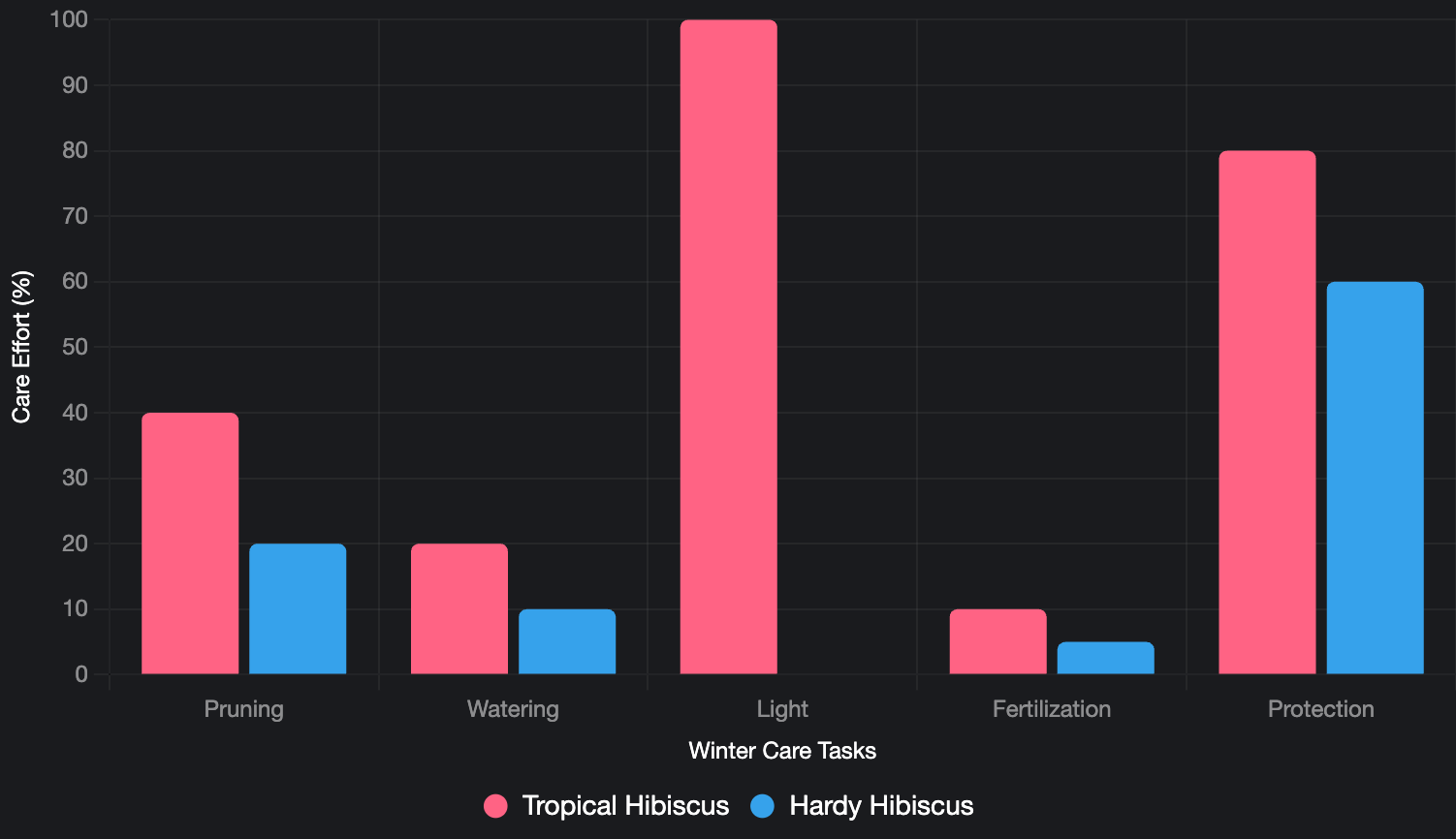
Note: Yellow leaves are not always a sign of dormancy. This article will help you to understand - Yellow leaves on hibiscus.
I will first discuss about the hibiscus you need to bring inside. Later on, I will talk about caring for your hibiscus outdoors in winter.
I have created two separate resources for winter gardeners:
These articles will help you understand the cold tolerance of many common plants.
Winter care for hibiscus indoors
You don't have to bring your hardy type hibiscus indoors in winter. If you want to bring other types of hibiscus inside in winter, there are a few things you need to do earlier.
For Zone 6 gardeners, I recommend bringing your hibiscus plant inside, even if it is a hardy type hibiscus.
What to do before bringing hibiscus inside in winter
A few weeks before bringing it inside, spray the leaves and branches with water. If you notice aphids, mealybugs, or other pests, make sure you get rid of those first.
You can follow this guide: How to get rid of mealybugs on hibiscus.
For aphids: How to get rid of aphids.
Now it's time to prune.
DO NOT prune when fall has started. Do this earlier. Prune in late summer or early fall, at least 4-6 weeks before the first expected frost.
Prune or trim 25-40% of its branches. Make sure you trim crowded branches or stems first.
If it's already a potted hibiscus, you are lucky. Just bring it inside just before dormancy or fall.
If it's planted in the ground and you are not from Zone 9-12, do not take the risk to keep it outdoors. Before the first frost, you must repot the plant in a container.
I recommend not using garden soil. Instead, use an acidic potting mix.
If you still want to use your normal garden soil, mix 30% perlite with the soil.
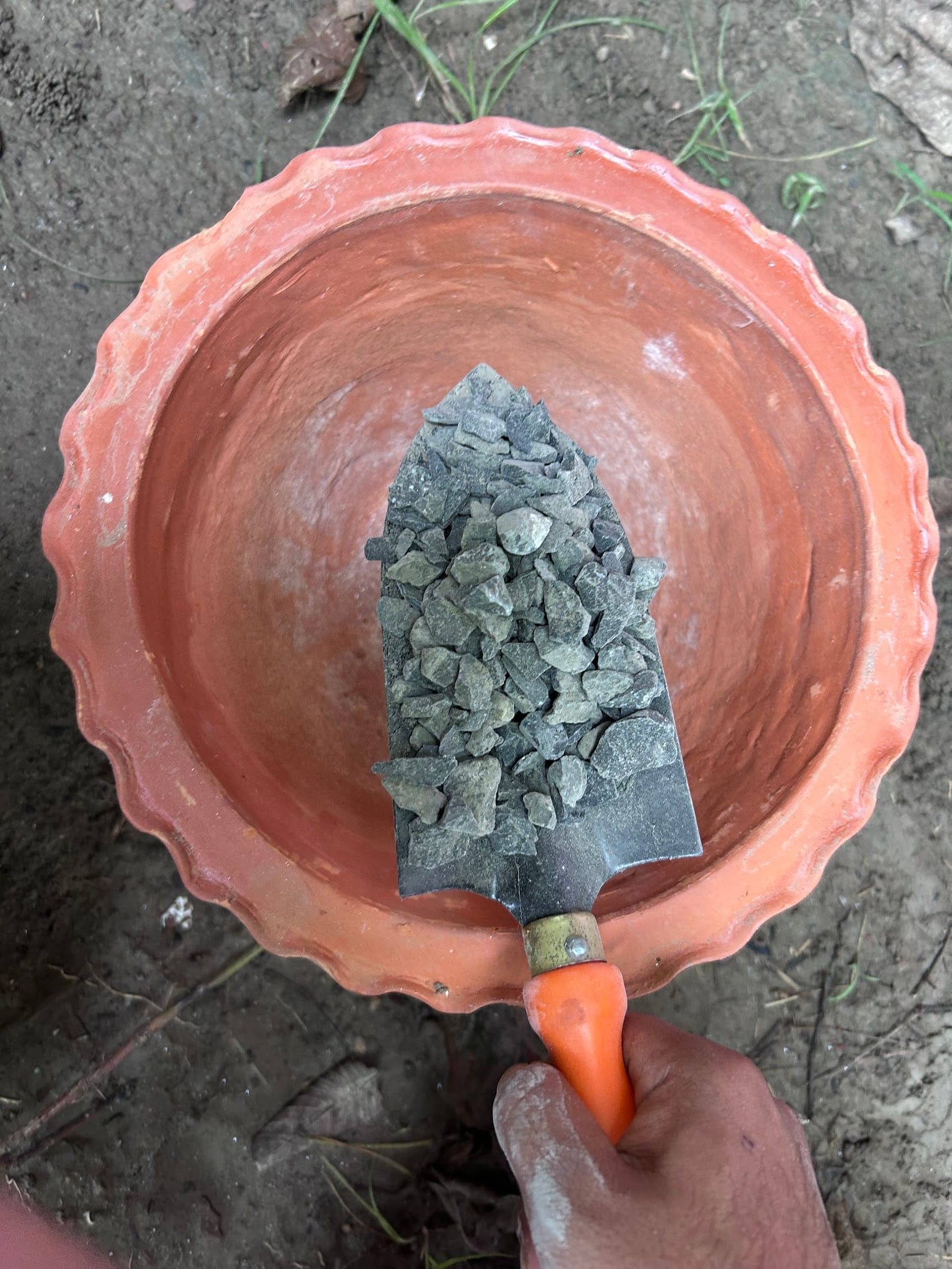
You can use pebbles or tiny rocks at the bottom of the container.
Overwintering hibiscus indoors
Place your hibiscus plant near a window (where it can get a good amount of indirect sunlight).
If light is scarce, turn on a full-spectrum grow light or shop light for 12-16 hours a day. (aim for 2000-3000 lumens for hibiscus)
Water only when the soil is dry. You don't need to keep the soil moist always. The water in the soil will evaporate more slowly than outdoors.
I do not prefer to feed my plants in winter unless they really need it. You should either skip fertilizing in winter or feed it a slow-release fertilizer (like 10-10-10).
Note: A newly transplanted hibiscus might get transplant shock. You may notice wilting leaves as well. Do not panic, and do not fertilize it. It will take some time to handle that shock.
Winter caring for hibiscus outdoors
You need to water your hibiscus plant deeply before the first frost. It will store moisture in the roots.
After the first frost, you will witness the leaves turning brown and falling off.
Let the foliage turn brown. This indicates that your hibiscus is entering its dormancy phase, so you’ll need to adjust the way you care for it.
After dieback, cut stems to 6-8 inches above ground. It will reduce the cold wind damage.
Gently scratch the stem; if it’s green underneath, the plant is alive and dormant.
Apply 3-5 inches of organic mulch around the base. ( Cover the ground properly)
Note: This is for colder regions, where you may get frosts in wintertime. For Zone 9-12, no need to worry that much.
Water your hibiscus very carefully during dormancy. Overwatering can be dangerous. When you notice the soil is dry, water it. That's all. Some hardy plants do not require watering in extreme cold.
I love it when it blooms in the next blooming season (after surviving the cold times)
